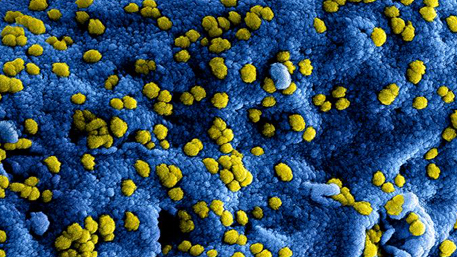
Predicting novel drugs for SARS-CoV-2 using machine learning from a >10 million chemical space
J Kowalewski, et al, Helyon, (Cell) AUgust 2020
J Kowalewski, et al, Helyon, (Cell) AUgust 2020
We have developed a machine learning drug discovery pipeline to identify several drug candidates. First, we collect assay data for 65 human proteins known to interact SARS-CoV-2. We train machine learning models to predict inhibitory activity and use them to screen FDA registered chemicals and approved drugs and ~14 million purchasable chemicals.
Disparities in Incidence of COVID-19 Among Underrepresented Racial/Ethnic Groups in Counties Identified as Hotspots During June 5–18, 2020 — 22 States, February–June 2020
JT Moore et al, CDC MMWR, August 14, 2020
JT Moore et al, CDC MMWR, August 14, 2020
Among 79 counties identified as hotspots during June 5–18, 2020 that also had sufficient data on race, a disproportionate number of COVID-19 cases among underrepresented racial/ethnic groups occurred in almost all areas during February–June 2020. Addressing the disproportionate incidence among communities of color can improve health outcomes related to COVID-19.
COVID-19 can affect anyone, and the disease can cause symptoms ranging from mild to very severe. For some other illnesses caused by respiratory viruses (such as influenza), some people may be more likely to have severe illness than others because they have characteristics or medical conditions that increase their risk.
Effect of an Inactivated Vaccine Against SARS-CoV-2 on Safety and Immunogenicity Outcomes Interim Analysis of 2 Randomized Clinical Trials
S Xia et al, JAMA, August 13, 2020
S Xia et al, JAMA, August 13, 2020
In this interim report of the phase 1 and phase 2 trials of an inactivated COVID-19 vaccine, patients had a low rate of adverse reactions and demonstrated immunogenicity; the study is ongoing. Efficacy and longer-term adverse event assessment will require phase 3 trials.
FALSE-NEGATIVE RESULTS OF INITIAL RT-PCR ASSAYS FOR COVID-19: A SYSTEMATIC REVIEW
IA Rodriguez et al, MEDRXIV, August 13, 2020
IA Rodriguez et al, MEDRXIV, August 13, 2020
The COVID-19 Pandemic Vulnerability Index (PVI) Dashboard: monitoring county level vulnerability
S Marvel et al, MEDRXIV, August 13, 2020
S Marvel et al, MEDRXIV, August 13, 2020
To better support counties and municipalities, we integrated baseline data on relevant community vulnerabilities with dynamic data on local infection rates and interventions into a Pandemic Vulnerability Index (PVI). The PVI presents a visual synthesis of county-level vulnerability indicators that can be compared in a regional, state, or nationwide context.
Population stratification enables modeling effects of reopening policies on mortality and hospitalization rates
T Huang et al, ARXIV, August 10, 2020
T Huang et al, ARXIV, August 10, 2020
A Deep Learning Approach for COVID-19 Trend Prediction
T Yang et al, ARXIV, August 9, 2020
T Yang et al, ARXIV, August 9, 2020























.png)









No hay comentarios:
Publicar un comentario